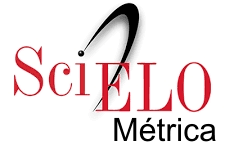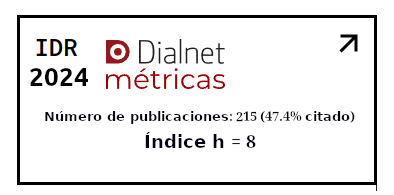Videos as a development tool of oral fluency in English
Keywords:
Perception, speaking, video, teaching, English languageAbstract
For Chilean students, developing the ability of speaking in English is a big challenge, and at the same time, it affects their perception of the level of ability they have got in the language. This action research involved a group of students from a Chilean public school, into a didactic sequence based on developing English oral fluency through the creation of situational videos in which learners could watch themselves speaking English and could analyse the perceptions of their own abilities. To do this, learners answered a scale of perceptions of English oral fluency, at the beginning of the didactic sequence, in the middle and end of it. Using descriptive statistics, this study showed that the making of videos had a positive effect on students’ perceptions, especially on the attitudinal area related to English.
Downloads
References
Bajrami, L., y Ismaili, M. (2016). The role of video materials in EFL classrooms. Procedia-Social and Behavioral Sciences. 232, 502-506. https://doi.org/10.1016/j.sbspro.2016.10.068
Carney, N., y Foss, P. (2008). Student-produced video: Two approaches. English Teaching Forum, 46, 583-606. https://eric.ed.gov/?id=EJ1096278
Fillmore, C. J. (1979). On fluency. En C. J. Fillmore, D. Kempler, y W. S. Y. Wang (Eds.), Individual differences in language ability and language behavior (pp. 85-102). New York: Academic Press.
Gromik, N. (2009). Producing cell phone video diaries. En M. Thomas (Ed.), Handbook of research on Web 2.0 and language learning. Hershey (PA): Information Science Reference.
Huba, M., y Freed, J. (2000). Learner-centered assessment on college campuses: shifting the focus from teaching to learning. Iowa: Iowa State University.
Kiernan, P. y Aizawa, K. (2004). Cell phones in task-based learning-are cell phones useful language learning tools? Recuperado de https://www.researchgate.net/publication/231897299_Cell_phones_in_task_based_learning_-_Are_cell_phones_useful_language_learning_tools
Maisa, S. (2018). Evaluation of learners spoken English fluency: An experimental study. Recuperado de http://www.languageinindia.com/oct2018/sridharspokenenglishfluencyfinal.pdf
Morrison, A. (2017). Fluency in the EFL chilean classrooms: To what extent do teachers and textbooks promote oral fluency? Recuperado de https://www.teachingenglish.org.uk/sites/teacheng/files/astrid_morrison_university_of_reading_dissertation.pdf
Puspa, A. (2016). Student-made video project to enhance students’ learning experience. Recuperado de http://ejournal.unp.ac.id/index.php/selt/article/view/6911
Rosario, P.D. (2010). Lights, camera, action! student-produced videos in an English Language Program. Recuperado de https://www.semanticscholar.org/paper/Lights%2C-camera%2Caction!studentproducedvideosinRosario/b22f25474e3d335f015f36eea1889b973ab83094
Rossiter, M., Derwing, T., Manimtim, L. G., y Thomson, R. (2010). Oral fluency: the neglected component in the communicative language classroom. The Canadian Modern Language Review, 66, 583-606. doi: 10.3138/cmlr.66.4.583
Segalowitz. N. (2010). Cognitive bases of second language fluency. New York: Routledge.
Stockwell, G. (2007). Vocabulary on the move: Investigating an intelligent mobile phone-based vocabulary tutor. Computer Assisted Language Learning, 20(4), 365–383.
Tavakoli, P. (2016). Fluency in monologic and dialogic task performance: Challenges in defining and measuring L2 fluency. International Review of Applied Linguistics in Language Teaching, 54, 33-150. https://doi.org/10.1515/iral20169994
Tavakoli, P., y Skehan, P. (2005). strategic planning, task structure and performance testing. Language Learning & Language Teaching, 239-273. http://dx.doi.org/10.1075/lllt.11.15tav
Thornton, P., y Houser, C. (2005). Using mobile phones in English Education in Japan. Journal of Computer Assisted Learning, 21, 217–228.
Published
How to Cite
Issue
Section
License
Copyright (c) 2021 ACADEMO Revista de Investigación en Ciencias Sociales y Humanidades

This work is licensed under a Creative Commons Attribution 4.0 International License.







